Best iPhone or iPad Audio Interface for 2024
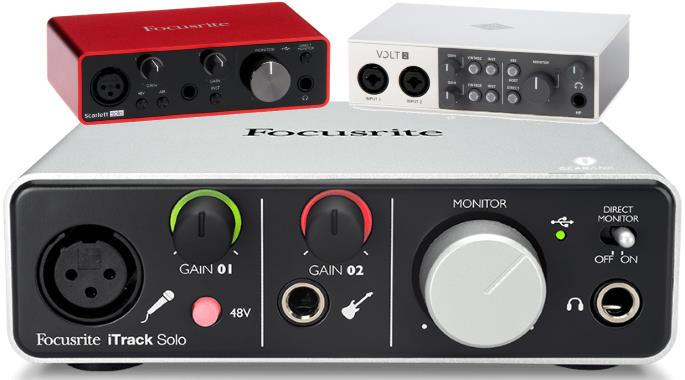
Best iPad Audio Interfaces - Lightning Compatible
You might be wondering "Can I use audio interface with iPad?". The answer is yes, and you can find one with a lightning cable connection that is very convenient. Here are the top-rated iPad audio interfaces that allow for easy out-of-the-box use, eliminating the need to purchase separate USB to lightning adapters.
IK Multimedia iRig HD 2 Guitar Audio Interface
Cons
- One trick pony - only for guitar
Pros
- Easy to set up and use - no external power required
- More convenient for guitar than a regular interface
- Turns your iPad into a guitar headphone amp with lots of effects for practicing
When the original iRig hit the scene, it revolutionized guitar tone possibilities. It enabled guitar players to use their mobile devices as music production platforms, effects units, and even as live performance tools.
The iRig HD 2 is the successor to this legacy with an upgraded 96kHz sampling rate and a 1/4" output jack for connecting your virtual rig to a real amp or P.A. system.
This is a convenient iPad audio interface when you want to use your iPad to practice guitar. But it's not limited only to practice duties, it also lets you record audio into iPad apps.
Even though it only comes with the cut-down version of AmpliTube, you can still spend hours enjoying different effects through the headphone output. As a bonus, it also works as a plugin for your DAWs like Pro Tools, Reason, Logic, and more.
The combination of the iRig with AmpliTube means you can use your iPad as a versatile guitar headphone amp with more sounds than you typically get from regular ones.
You can even use this as a live guitar iPad interface, where the iPad is used as an effects unit.
If I had a complaint it would be that this iPad and iPhone audio interface is a one-trick pony, you can use it for guitar but nothing else so it's a piece of gear that's more of a guitar accessory than an iPad device.
The IK Multimedia iRig HD 2 is a great audio interface for guitar-specific uses. With AmpliTube bundled in, the combination gives a lot of freedom for tonal exploration for the tone-chasing guitar player.
Specifications
- A/D Resolution: 24-bit/96kHz
- Connectors: 1 x USB Micro-B (also includes lightning cable)
- Simultaneous Channels: 1 x 1
- Inputs: 1 x 1/4" (instrument)
- Outputs: 1 x 1/4" (amp processed/amp thru)
- Features: High-quality, instrument-level 1/4" Hi-Z input jack, Adjustable input gain, 24-bit A/D conversion.
- Power: Bus Powered
- Phantom Power: None
- Bundled Software: AmpliTube SE
| Website | Source | *Rating Value |
| Guitar Chalk | Bobby | 86/100 |
Focusrite iTrack Solo Lightning
Cons
- Needs a separate USB cable for power when used with the iPad
- Gain adjustments are tricky
Pros
- Great for mobile recording - particularly for speech
- Solidly built - it's safe to carry on your travels (reasonable care assumed)
- Perfect for your first 'serious' interface
The Focusrite iTrack Solo Lightning is a versatile iPad audio interface that comes in a mini-rack form factor.
As the label implies, this version comes bundled with a lightning cable. This makes it a compatible audio interface for ipad and other modern iOS devices out-of-the-box.
Note that lightning cables don't provide power so you need a separate USB power adapter. Another issue is that this will not charge the iPad while in use. You don't however need the adapter when running it off your laptop or PC.
The iTrack Solo Lightning is meant for the entry-level market. It's great for recording speech in addition to music demos, which makes it a good piece of Podcast Equipment to have.
If you're going to record songs to release commercially, then I recommend going for the Scarlett Solo instead. That is, if you don't need the Lighting connection. I prefer the preamps on that model, they also provide more gain.
One thing you'll notice is that gain adjustments can be a bit tricky at first, but that's a non-issue once you've got the settings dialed in just right.
If you're accustomed to the sound of Focusrite preamps and want something portable, the iTrack Solo is a good pick. Even if it's your first or only interface, Focusrite's preamps have a reputation in the industry as being one of the best. If good raw tracks are what you need, then this iPad or iPhone audio interface is a great pick.
Specifications
- A/D Resolution: 24-bit/96kHz
- Connectors: Lightning, USB
- Simultaneous Channels: 2
- Inputs:1 x XLR, 1 x 1/4" Instrument input
- Outputs: 1 x RCA Monitor Outs, 1 x 1/4" Headphones
- Power: USB
- Can charge IOS unit: No
- Phantom Power: Yes
- Bundled Software: Ableton Live Lite, Novation's Bass Station, Focusrite Scarlett Plug-in Suite, 1GB Loopmasters Samples.
| Website | Source | *Rating Value |
| Audiofanzine | mrjason | 80/100 |
Best iPad Compatible USB Audio Interfaces
These are top-rated USB Audio interfaces that can work with the iPad via Apple's Lightning to USB adapter, or Camera Connection Kit. These interfaces work with the iPad because they are USB audio Class Compliant which means they don't need proprietary drivers.
The standard USB adaptors won't be able to charge your iOS device and generally won't supply enough power to these interfaces so they will need a dedicated power supply.
Arturia MiniFuse 1
Cons
- MIDI Controllers that require voltage higher than 5v might not be compatible with the built-in USB hub
Pros
- Plug and play connection out of the box
- Has buttons/knobs for each function (instead of some multi-function knob or a screen)
- Great bang for buck
The Arturia Minifuse 1 is a compact and stylish audio interface that offers a plug-and-play experience out of the box. It has a sturdy metal case and a large monitor knob that is easy to adjust. Additionally, it features buttons and knobs for each function, such as direct monitoring, phantom power, and input selection, making it convenient and intuitive to use.
The Minifuse 1 has a single combi input for mic, line, or guitar and a headphone output. It can record up to 24-bit/192kHz with a dynamic range of 110dB and a gain range of 56 dB. The drivers are snappy and allow for low-latency monitoring and recording. The Minifuse 1 also has a generous software bundle that includes Ableton Live Lite, Guitar Rig 6 LE, and four premium Arturia plug-ins that add character and improve audio quality.
However, the main drawback of the Minifuse 1 is that it has only one input, limiting your recording options. You cannot record two sources at once or sing and play simultaneously. Additionally, you must be careful with the MIDI controllers you plug into the built-in USB hub, as some may require more than 5V of power and may not work correctly. The Minifuse Control Center app is also very basic and offers little control over the input, output, or loopback settings.
Overall, the Arturia Minifuse 1 is an excellent way to interface to iPad and iPhone apps. It is perfect for beginners, hobbyists, and mobile musicians who need a simple and reliable solution for recording and monitoring. It has a sleek design, a smooth connection, and decent sound quality. It also comes with a valuable software package that enhances your production. However, consider other options if you need more inputs, MIDI I/O, or more advanced features.
Specifications
- A/D Resolution: Up to 24-bit/192kHz
- Connectors: 1 x USB-C, 1 x Type A
- Simultaneous Channels: 1 x 2
- Inputs: 1 x XLR-1/4" combo (mic/line)
- Outputs: 2 x 1/4" TRS
- Power: USB bus powered
- Can charge IOS unit: no
- Phantom Power: Yes
- Bundled Software: Ableton Live Lite, Analog Lab Intro, Auto-Tune (3-month subscription), GUITAR RIG 6 LE, Splice (3-month subscription)
| Website | Source | *Rating Value |
| Sound on Sound | Robin Vincent | 94/100 |
Focusrite Scarlett Solo 3rd Gen
Cons
- Absence of MIDI In/Out ports is a slight inconvenience for those using MIDI controllers or instruments
- Can be buggy with some communication software
Pros
- A solid choice for budding audiophiles and professional musicians alike
- Aesthetically pleasing design compact that feels robust in a sturdy metal casing
- Low-latency monitoring allows monitoring recordings in real-time without any noticeable delay
- Improved preamps that deliver crisp and clean sound
Specifications
- A/D Resolution: 24-bit/192kHz
- Connectors: 1 x USB Type C
- Simultaneous Channels: 2 x 2
- Inputs: 1 x XLR, 1 x 1/4"
- Outputs: 2 x 1/4"
- Power: USB bus powered
- Can charge IOS unit: No
- Phantom Power: Yes
- Bundled Software: Focusrite Control 2, Ableton Live Lite, 3-month Avid Pro Tools Artist
The Focusrite Scarlett Solo 3rd Gen is a compact and affordable USB audio interface that offers great sound quality and features for recording vocals and instruments. It has one mic input, one instrument input, two outputs for speakers and headphones, and a switchable “Air” mode that emulates the tone of Focusrite’s ISA preamps. The interface comes with a bundle of software and plugins to get you started with music production.
I've used several Focusrite interfaces in the past and I have good experiences with the Solo’s preamp performance, especially with dynamic and condenser mics, and the build quality of the device. I also like the additional gain and lower noise floor of the 3rd gen model. However, I find some drawbacks with the Solo, such as the shared volume control for headphones and speakers, the underpowered headphone output, and the buggy compatibility with some software like Discord.
Note that there is now a Focusrite Scarett Solo 4th Gen available, which means you can get the Solo 3rd Gen at cheaper prices. It will take time to prove if it has the same very high quality build as the 3rd Gen.
Overall, I recommend the Solo for anyone who wants a simple and effective audio interface that can pair well with even the most expensive microphones. It works well as an iPhone, iPad, or iPad Pro audio interface for those who want to take their recording quality up a notch.
You can read the full review below:
| Website | Source | *Rating Value |
| Gearank | Raphael Pulgar | 92/100 |
Things to Consider When Buying an Audio Interface for the iPad
-
Some audio equipment can work with an iPad, but it can be tricky to set up and may require extra accessories. It's better to buy an iPad USB compatible audio interface, one that's designed to work specifically with the iPad you are using - be it an Apple Lightning Connector or USB C. This will help you avoid buying additional adapters and reduce clutter.
However, if you have an older iPad that uses a 30-pin connector, you will need to make sure the audio interface you choose is compatible. Current iPads and iPhones have a USB C port, which means they no longer need Apple's Lightning cables. Moving forward, the best audio interfaces will be able to connect to iPads and iPhones using USB C.
-
These are audio interfaces that utilize industry-standard USB drivers to work. They let you transfer USB audio to iPad, iPhone and other iOS devices. And they work seamlessly with multiple operating systems. While being able to switch between your iPad and your computer is a good thing, they will need you to buy an Apple USB Camera Adapter to connect to the lightning interface on your iPad.
The main accessory people use is Apple's Lightning to USB Camera Adapter or the Apple iPad Camera Connection Kit (for older 30 pin devices). The Lightning to USB 3.0 Camera Adapter offers faster connection, but it's a bit pricier. This adapter does allow you to charge you're iPad while connected to USB which isn't possible with the other two.
Note that USB interfaces generally won't be able to draw enough power via USB port / USB adapter. This means that you may need multiple USB cables to operate the interface and power it up.
See the following section on power consumption.
-
The iPad is designed to limit the amount of power supplied to external devices. While this can preserve iPad battery life it also presents challenges for said external devices. This is the reason why most audio interfaces made specifically for the iPad need dedicated power though a few are capable of charging your iPad.
This makes them ideal for long recording sessions. Those interfaces that are 'bus-powered' have to contend with the iPad's limited power. They tend to be small one channel interfaces and features like phantom power are scaled-down, if not turned off. That said, they are the most convenient and portable options you find.
When it comes to compatible USB interfaces connected through a lightning adapter, you will need another supply of power. Interfaces that are USB bus-powered will usually not get enough 'bus power' via the lightning adapter to function. This is where interfaces that can use a dedicated power supply can come in handy.
The solution for interfaces that can only be USB 'bus-powered' is to use a powered USB hub. Although this works it does add another box and cable to your setup which can reduce the portability and convenience of the setup. Check out the video below on how to connect bus-powered interfaces with the iPad:
-
The USB audio interface is an integral studio equipment for home and mobile recording. If you're planning to record vocals and other instruments, you'll want one that comes with both 1/4" and XLR inputs. Note that electric guitars, basses, and other instruments need a higher impedance than line-level inputs. Even though they use the same 1/4" connection. So look out for connections or switches labeled 'Instrument' or 'Hi-Z' to see if an interface can handle these properly.
A workaround for this is to use a DI Box which converts instrument signals into line level before going into the audio interface. Another important consideration is having a 48V phantom power switch. This is the standard when you're planning to use condenser mics. Another workaround is to connect a mixer to your audio interface, this will expand your input options for plugging in more dynamic and condenser microphones.
Some interfaces also provide ADAT connections to allow you to add up to 8 extra tracks via a separate ADAT audio interface.
-
Many of today's affordable audio interfaces come with the same mic preamps as expensive audio interfaces. This means that even in the entry-level market, you are getting good sound quality with low Equivalent Input Noise (EIN). These preamps also generally work well with instruments like guitars, bass, and keyboards. This is a big plus for those who prefer real instruments vs virtual instruments. Other specs to watch out for include Bit rate and Sample Rate, as these will impact the resulting sound quality.
You can also expand your inputs and preamp options by using a Mixing Console.
Lightning Compatible Audio Interfaces
Class Compliant USB Audio Interfaces
Power Consumption
Input Compatibility
Mic Preamp Quality
Best iPad Audio Interface Selection Methodology
The first edition was published in 2016. The current edition was published on Feb 9, 2024.
We changed our eligibility criteria and selection methods for this edition with only interfaces priced under $200 being considered. We selected the 2 highest rated interfaces compatible with Apple's Lightning cable and the 2 highest rated iPad compatible USB audio interfaces - while technically any USB class compliant interface can be used with the iPad, we made our own determination as to which non-lightning ones were eligible.
Note that Apple has switched their current devices to USB C. This means easier compatibility, and audio interfaces like the Universal Audio Volt won't need to be lightning cable compatible to work with the latest iPads and iPhones.
We collected rating and review data from store ratings, forum discussions, user videos, expert reviews and similar feedback sources to process with the Gearank Algorithm to produce the rating scores out of 100 that you see above that were the basis for our selection. During this process we collected data about 43 eligible interfaces from over 68,500 sources. For more information about our methods see How Gearank Works.
About the Author and Contributors
Here are the key people and sources involved in this guide's production - click on linked names for information about their music industry backgrounds.
Lead Author & Researcher
Raphael Pulgar
I've been an audio engineer for 20 years specializing in rock and metal recordings. I also play guitar and produce original music for my band and other content creators.
Some of the recording gear I regularly use in my studio includes the Focusrite Scarlett 18i20, Focusrite Scarlett Solo, Samson QH4 Headphone Amp and Cloudlifter CL-1. My main mics include Aston Origin, Aston Element, Shure SM57, Rode NT1, Rode PodMic and MXL V67G.
Contributors
Alden Acosta: Product research.
Jerry Borillo: Product Research and Illustration.
Jason Horton & Alexander Briones: Editing.
Media
Main/Top Image: Compiled using photographs of Focusrite Scarlett Solo 3rd Gen, Focusrite iTrack Solo and Universal Audio Volt 2.
The video has been embedded in accordance with YouTube's Terms of Service.
The individual product images were sourced from websites, promotional materials or supporting documentation provided by their respective manufacturers except for the UA Volt 2 Speaker and Headphone Controls which was photographed by the author.



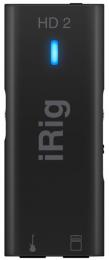
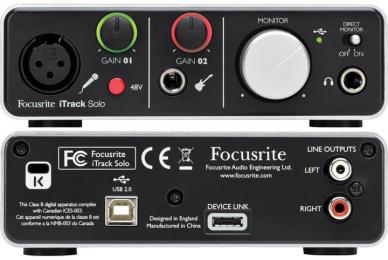
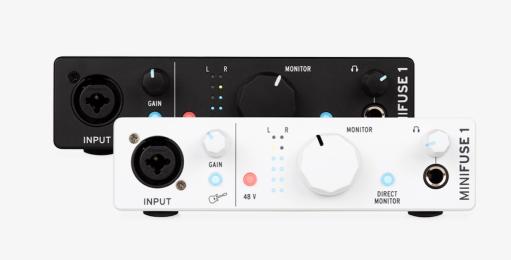
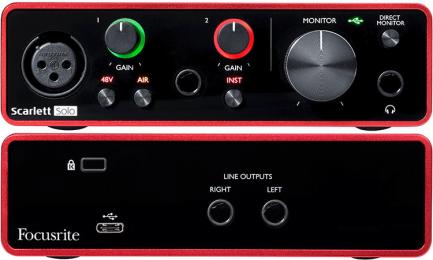
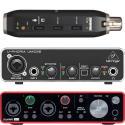

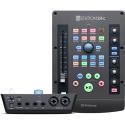
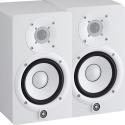

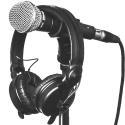
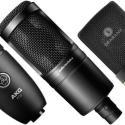

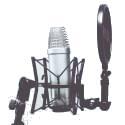
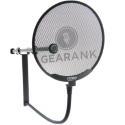





Comments
Focusrite do one and irig I
Submitted by Alex Crawshaw (not verified) on
Focusrite do one and irig I think.
Yes, I tend to agree. The
Submitted by John Siket (not verified) on
Yes, I tend to agree. The iPad just doesn't have enough "juice" for bus-powering a stereo interface. Personally, I'd be too worried to rely solely on bus power during a recording. I always feel better knowing that I'm plugged into the "wall." If I needed to record something in the field where there were no electrical outlets I would probably use something like a portable "Zoom" recorder or something like that.
Pages